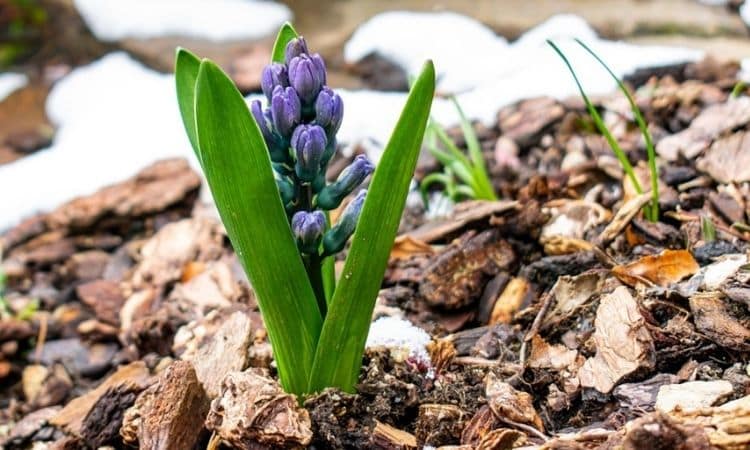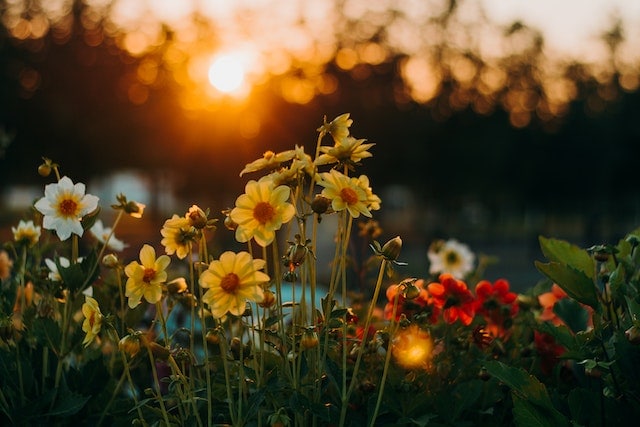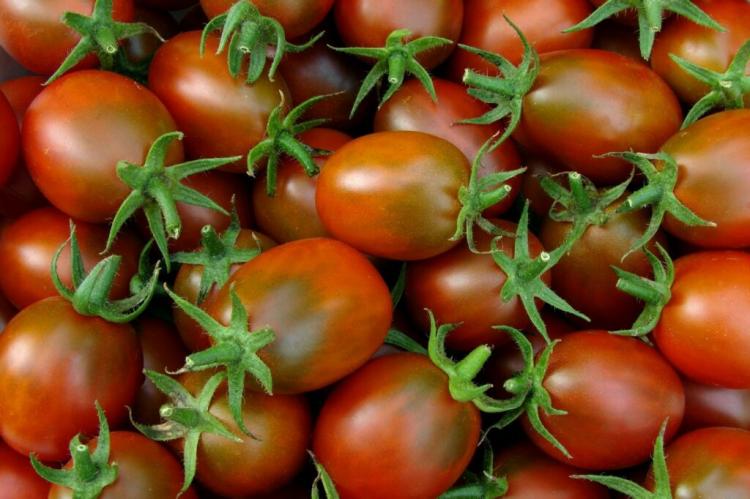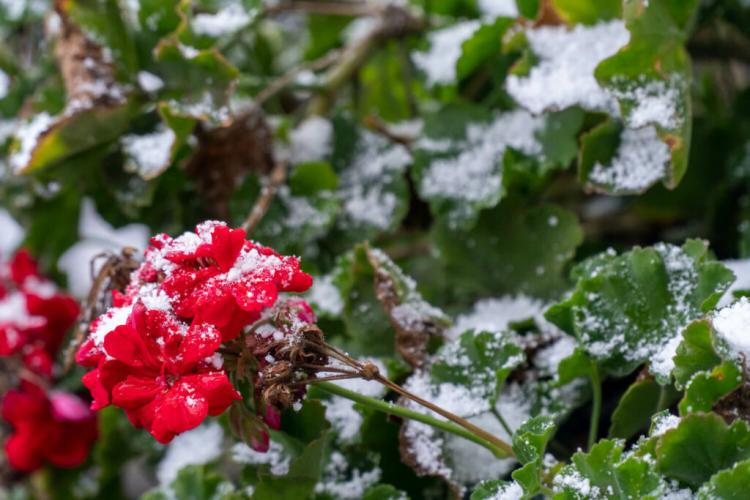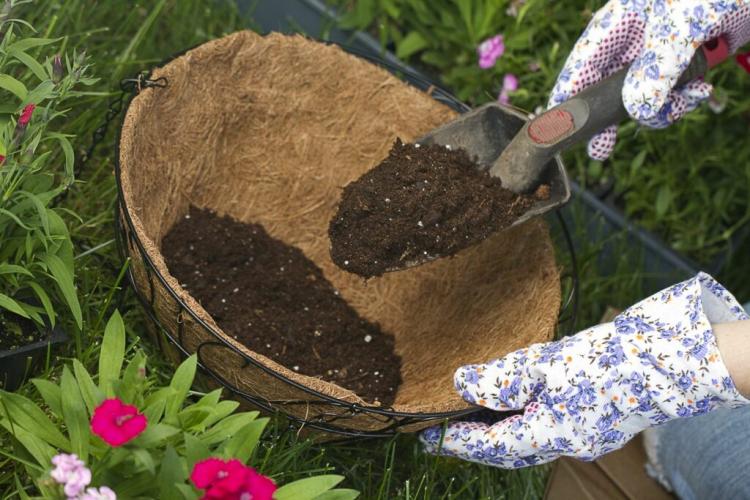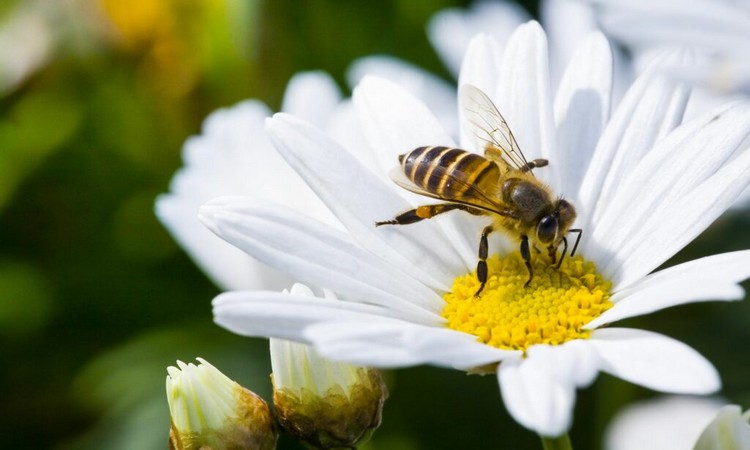Mulch Material: Bark Mulch, Pine Mulch In Comparison
What materials can be used for mulching? Which mulching material is used for which purpose? We show the advantages and disadvantages of bark mulch, pine mulch, and Co.
For most people, mulch is an integral part of their garden. Many especially appreciate the visual appeal of different mulch materials. However, mulching not only has a positive influence on the aesthetics but can also support the plants: It reduces evaporation near the ground, thus protecting against dehydration, safeguarding the soil against erosion, and compensating for temperature fluctuations.
In addition, many mulching materials reduce weed pressure by inhibiting the growth of unwanted guests. Especially in winter, however, mulch is real-life insurance – it protects plants that cannot winter indoors from freezing and thus ensures that they can enter the next year undamaged. In the meantime, there is a whole range of materials that are supposed to be suitable for mulching.
The advantages and disadvantages of these and which material should be used for which plant are explained here. You can find out exactly what advantages mulching brings to the garden in our special article.
Bark mulch
Table of Contents
Bark mulch is probably one of the best-known mulch materials and is especially popular because of its beautiful appearance. The organic material consists of the bark of various coniferous and deciduous trees and is ideal for mulching perennial beds, but is also used as a road surface.
Especially ferns, hydrangeas, and rhododendrons love the bark mulch. It suppresses weeds very reliably and also shields the soil well from drying out and erosion. At the same time, bark mulch has a soil-activating effect, because it slowly rots to hummus and offers additional shelter to various beneficial organisms.
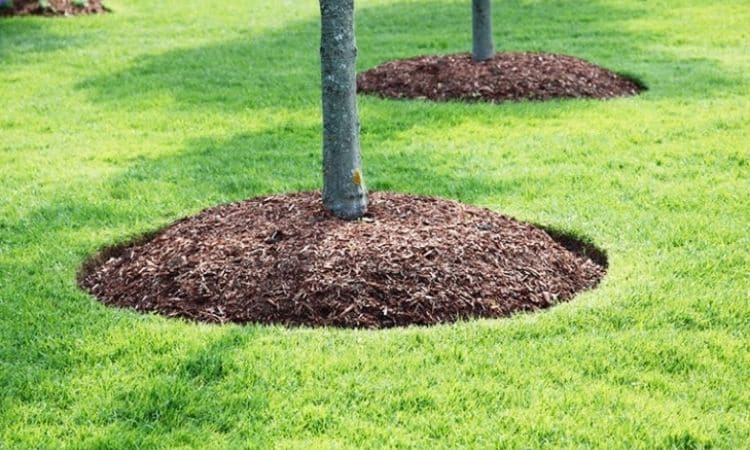
Unfortunately, bark mulch also has numerous disadvantages: Fresh bark mulch often contains herbicidally acting tannins that remove nitrogen from the soil. This problem can be reduced by using the already fermented bark hummus instead of bark mulch and by additionally ensuring sufficient nitrogen fertilization.
In addition, specially purchased bark mulch is often contaminated with increased cadmium concentrations. Moreover, not only beneficial organisms but also voracious snails are particularly well-filled in bark mulch – in order to mulch the vegetable patch, you should therefore prefer to use other materials.
Pine Mulch And Pine Bark
Pine bark or pine mulch and bark mulch are very similar – with the small but subtle difference that only pine (Pinus pinea) is used as the starting material for the former. Therefore, pine bark mulch has many advantages over bark mulch. For example, it impresses with good weed suppression and protection against drying out. Also optically, the pine bark mulch is in no way inferior to the bark mulch with its attractive red-brown color and its nice smell.
In addition, pine bark rots much more slowly, so it does not need to be replaced as often, it rots less and is less likely to be contaminated. However, pine mulch also removes nitrogen from the soil during the rotting process (although less than bark mulch), which must be compensated for with additional fertilization.
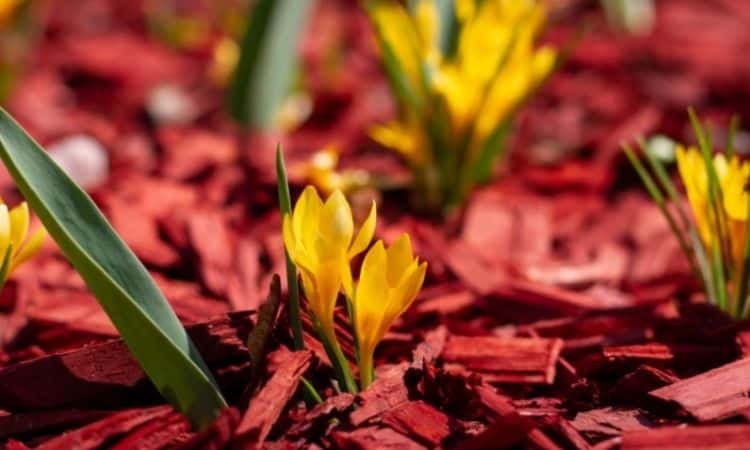
In addition, pine mulch is often significantly more expensive than normal bark mulch and has a worse CO2 balance due to the usually long transport distance. Pine bark is particularly suitable for mulching perennial beds, but can also be used for potted plants. Unfortunately, it is not well suited for mulching vegetable beds.
Wood chippings
Whether it’s a matter of pruning or even felling entire trees – wood is produced in almost every large garden. But instead of simply throwing the cuttings away, you can also use them sensibly: Shredded with a shredder, you get a great mulch material. The advantages here are obvious because wood chippings are cheap, quickly available, and (at least if they come from your own garden) also sustainable.
At the same time, wood chippings rot much more slowly than bark mulch, so that the mulch layer has to be renewed less often. In addition, wood chippings as mulch reliably suppress weeds and prevent both siltation and drying of the soil. Unfortunately, however, wood chippings remove nitrogen from the soil, making them less suitable for mulching the vegetable patch.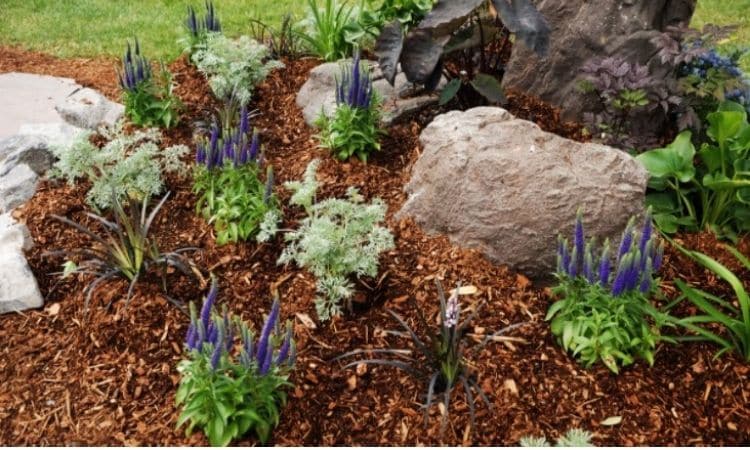
For mulching perennial beds, however, wood chippings are suitable, provided that care is taken to compensate for the nitrogen removal by the wood chippings by means of fertilization. However, wood chippings are particularly popular in gardens with children – applied in a lush layer, they serve as a shock-absorbing surface on playgrounds or paths that can minimize injuries.
Leaves for mulching
For many gardeners, the fallen leaves in the fall cause nothing but annoying work, but autumn leaves can also be used sensibly in the garden. In fact, one can make a virtue out of necessity by skillful action. Foliage can be used as mulch and doesn’t cost a cent. A layer of leaves protects the soil from drying out and also acts as a protection against weeds.
Over the winter, the leaves are then slowly decomposed by microorganisms and release nutrients into the soil. However, the protective effect of foliage against frost, which is particularly important in autumn and winter, is particularly good. Foliage is therefore predestined for mulching the perennial bed because it reliably protects plants sensitive to cold.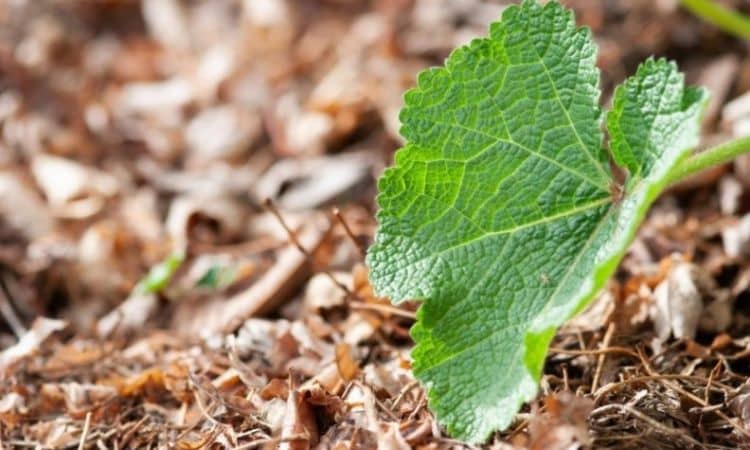
Foliage can also be used for mulching the vegetable bed because especially forest plants such as raspberry (Rubus idaeus) or strawberry (Fragaria) react positively to the leaf protection in the root area. Only the optics of the foliage in the bed may disturb some garden owners and therefore represents a disadvantage. Also, only healthy leaves should be used for mulching, as otherwise, diseases such as mildew can spread in the garden.
Needle For Mulching
A coniferous tree in the garden can be an enrichment – if only there were not this annoying needle litter, which is accumulated year after year. But just like leaves, the needles of almost all coniferous trees can be used as mulch material. On the one hand, they prevent strong temperature fluctuations in the soil and reduce soil compaction, but on the other hand – like many other types of mulch – they also allow better water infiltration.
The needle litter has a very long rotting period, so it does not need to be replaced as often. The terpenes contained in the needles delay the germination of other plants so that weeds are effectively suppressed. However, needle litter should not be used to mulch seedlings or young plants, as this effect can also have a negative impact on them.

Established plants, on the other hand, are not negatively affected. Furthermore, it should be noted that the needles have a low pH value. This makes needle litter particularly suitable for mulching bog beds or heather plants and is very popular with rhododendrons and hydrangeas.
Contrary to popular opinion, however, the needles of the trees are also suitable for mulching vegetable beds: In fact, the ideal pH value for most vegetable plants is in the weakly acidic range, so mulching with fir or pine needles is not a problem unless the soil has already had a low pH value. Blueberries (Vaccinium myrtillus) and cranberries (Vaccinium Vitis-idea) even prefer acidic soils, so that mulching with needles is an excellent option here.
Straw for mulching
Mulching with straw has a long tradition in many gardens – no wonder, after all, straw is not only cheap and readily available but also offers numerous advantages as mulch material. For example, straw enables good aeration of the soil, suppresses weeds, and releases nutrients to the soil when weathering.
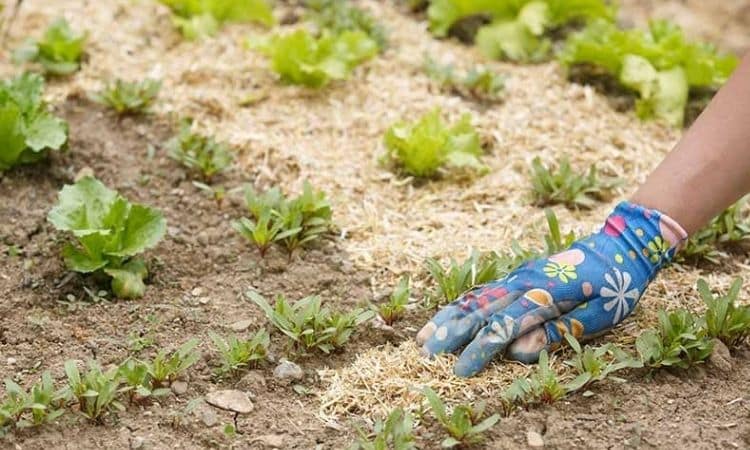
Straw is particularly popular for vegetable bed mulching, as plants such as strawberries and zucchinis (Cucurbita pepo var. giromontiina) do not lie directly on the ground and therefore remain nice and clean. Straw for mulching is particularly useful for plants with a long growing season – such as tomatoes (Solanum lycopersicum) or pumpkins (Cucurbita) – because they rot very slowly. Perennial shrubs also benefit from this, which is why straw is also suitable for perennial mulching.
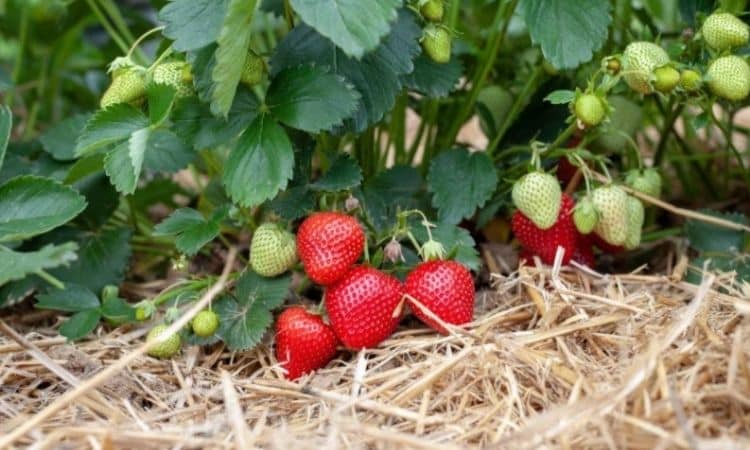
However, straw also withdraws nitrogen from the soil, which is why it is important to ensure that the soil is adequately supplied with nutrients. In addition, one should take care in the kitchen garden to use only untreated straw for mulching, since treated straw may contain residues of the chemicals used.
Cutting the lawn for mulching
No matter whether it is a small garden or a large estate – lawn cuttings occur in almost every garden. But if you’re tired of simply throwing away the mowed greenery, you can still give the lawn cut a second life: As a mulch, it prevents drying out and silting up, promotes soil life, and inhibits weed growth.
The special advantage of lawn cuttings is their quick availability and slow rotting. Nevertheless, when mulching with lawnmower cuttings, one must pay attention to a few points. For example, you should always apply only a thin layer of mulch and make sure that it is not too moist, otherwise, it can quickly rot.
If you mix some straw between the lawn cuttings, you can minimize this risk by improving the ventilation of the mulch layer. Lawn cuttings also remove nitrogen from the soil during decomposition, so a sufficient supply of nutrients is essential. Lawn cuttings are particularly suitable for mulching the vegetable bed – between young vegetable plants, this forms a stable mulch layer over time, which keeps the moisture in the soil.
